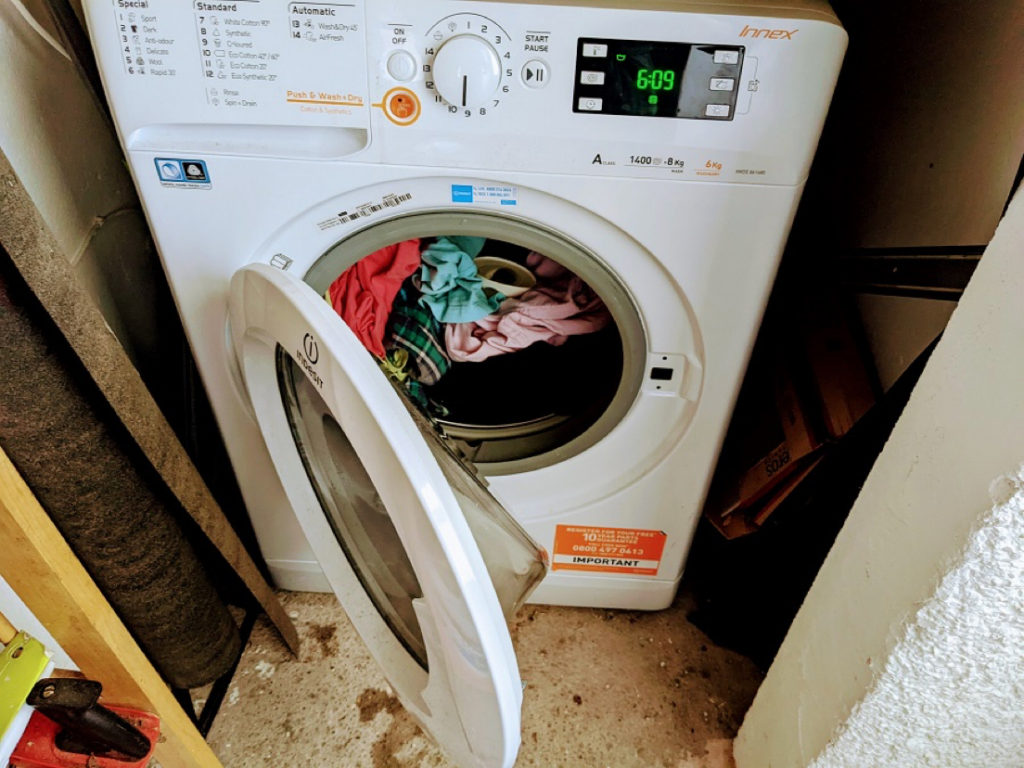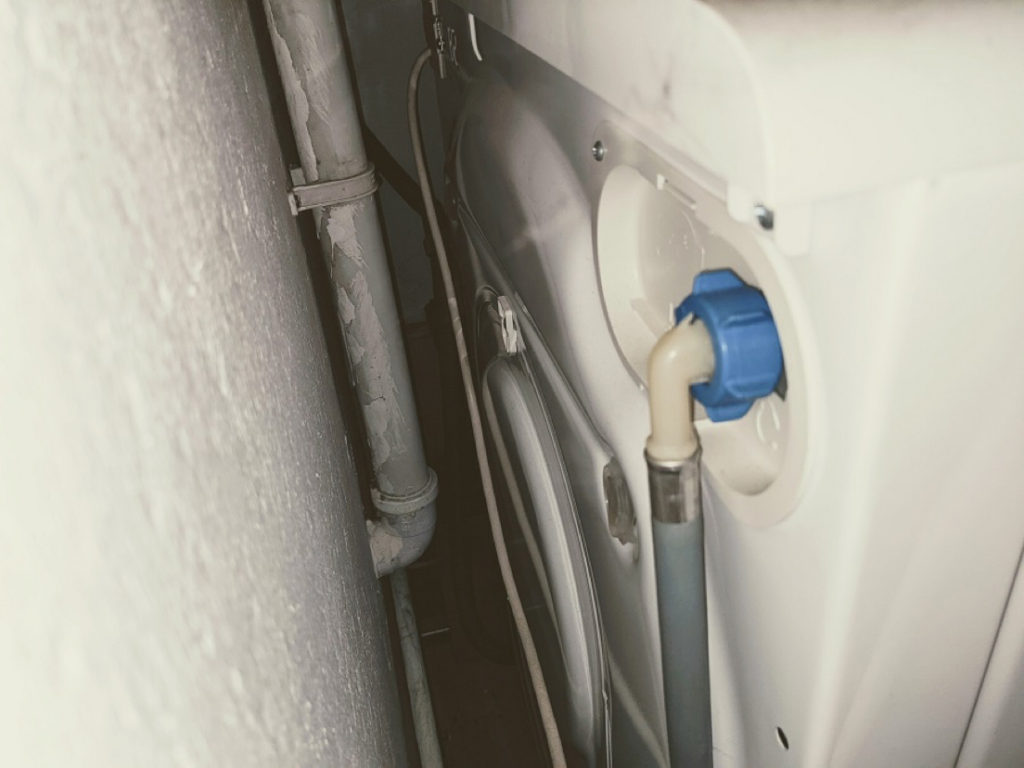Written On
Mon 13th December 2021
Written By
Homeforce
Category
Guides
Share This
If your washing machine is leaking from the bottom it could cause serious damage to your home and your machine.
But why is your washing machine leaking from the bottom? What’s going on, is it broken for good or can it be fixed, and if so how?
We’ll get into all that in this helpful article. But first, we’ll offer a quick answer so you can start to troubleshoot the problem.
In most cases water leaking from the bottom of a washing machine will be a drain hose becoming loose or damaged by debris, the drain pump not working properly or the pump hose connecting the machine to the pump damaged or faulty. Removal of the access panel will be able to determine the cause.
Before we get into details, it’s important to make sure you turn off the power to your machine if you are attempting a fix yourself.
If you prefer to get an expert washing machine specialist, then the best repair services are usually able to make an appointment to see you the same or the next day.
A qualified washing machine repair engineer will have the skill to repair the leak at the bottom of your washing machine, and all the equipment required to get the job done fast.
Ok so you can more easily understand why your machine is leaking from the bottom, let’s delve a bit deeper based on which type of machine you have.
Top loader or front loader?
It’s worth understanding troubleshooting a leak from underneath your washing machine will depend on whether it is a top or front loader.
Mainly these days, most washing machines in our homes are front loaders. This essentially means you put your clothes in the washer via a door on the front of the machine.

To find out why your machine might be leaking from the bottom you will probably need to remove the access panel. This can be in a different place depending on whether you have a top or front loading machine.
Top loaders
Some top-loader washers will have an access panel at the rear of the washer, while others may require removal of the top panel, control panel, and then the washer cabinet.
Front-loaders
Most front-loaders usually have an access panel at the bottom of the washer, just under the door.
However, some don’t have one at all. In this case, you’ll need to get behind the machine and remove it at the back.
If you’re not sure, take a look at your washer’s manual to find where the access panel is.
What do I do if my washing machine is leaking from the bottom
Ok so once you’ve turned off the power supply, you will need to turn off the taps and make sure your washing machine is sitting level on the floor.
Then take a look at our handy checklist so you can get started.
1. Check the hoses
Often when you are trying to locate an issue with water leaking from underneath your washing machine, it can be a problem with the hoses.
The drain hose
The first place to check is the external drain hose. This could have become kinked, worked loose, or even punctured.

Sometimes this happens when your washer is placed too close to the wall and in a wash cycle, the vibrations may cause damage.
For some washers, you should be able to tighten the hose from the back of the machine, but for other brands, you may have to take the machine apart to access it. Check your manual to find out.
Tub-to-pump hose
If you discover a large pool of water underneath your washing machine, there’s a good chance that it’s because there is an issue with the tub-to/pump hose. This is a hose inside the washing machine which connects the washtub to the pump.
To take a look at the pumps hose, you will have to remove the access panel.
Once you’ve located which hose is causing the problem, follow our top tips on how to check thoroughly:
- Disconnect both the water supply and power to the washer
- Remove the screws from the access panel or use a small knife to wedge it open
- Find both hoses which will be connected to the drain pump (drain and tub-to-pump hose)
- Check both pumps are securely connected
- Check both hoses for signs of any damage or rust
- Remove the hoses and check for any loose debris which might have caused the leak
If either of the pumps is damaged, they will need to be replaced.

2. Drain Pump
If your washing machine starts to shake and rattle ferociously, while there is water leaking from underneath your machine, there’s a good chance there will be a problem with your drain pump.
The drain pump could be belt or electric-driven, but some are direct drive.
It’s commonly a similar issue as with hoses causing the problem. Small objects can easily get lodged inside the filters or inside the pump causing leaks.
It could also be simple wear and tear such as a connection becoming loose, worn pump bearings, or even a crack in the drain pump.
To find out if it is the drain pump causing water to link from underneath your washing machine, follow our five-point checklist below.
How to check a drain pump
- Before any inspection of your machine, make sure you disconnect from the power and water supply
- Remove the access panel similar to the hose inspection.
- Next, find the pump which could have either two or three hoses connected, depending on the model. Some models have a circulating hose along with the drain and pump-to-tub hose
- Check all pumps for any damage such as cracks.
- Turn the drain pump impeller to make sure it is not damaged and still turns freely. If you discover any bits of plastic in the pump, this is an indication the impeller is broken. This will mean the pump needs to be replaced
So now we’ve discovered why your washing machine is leaking from the bottom, you might be wondering what happens if it’s leaking from the door too!
Read on to find out more to find out the problem, fast!
If your washing machine is leaking from the door too
It’s not a problem top-load washers have …but front-load washers may leak water from the door. Here are the most likely causes:
- Damage to the door boot seal: If there is water leaking from the door of your machine it could be the door boot seal might have become loose or is broken. Check to see if the ring (called a retainer ring) and also the spring which connects the back of the seal to the washing tub aren’t damaged and in place securely
- Boot seal recirculation tube is broken: As this tube is plastic and fairly brittle, wear and tear could cause it to break over time
- Washing machine is overfilling: machines that are overflowing can also result in leaking. This could be because the water pressure on your home is too low, a faulty pressure switch, or a broken water inlet valve.
And finally…
We hope that’s helped you to discover why your washing machine might be leaking from the bottom and how to get it up and running again.
Instead of waiting for something to go wrong with your machine and paying out for a new part which could be costly, find out more about our appliance plans.
Here at Homeforce, we have a U.K.-wide network of highly skilled engineers who will get your appliances up and running in no time, with no further costs!